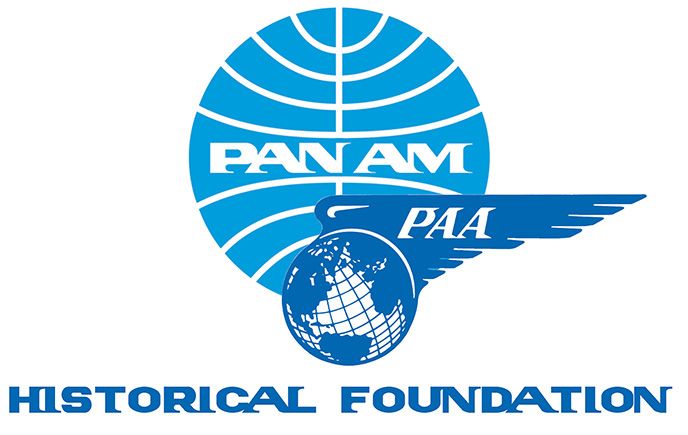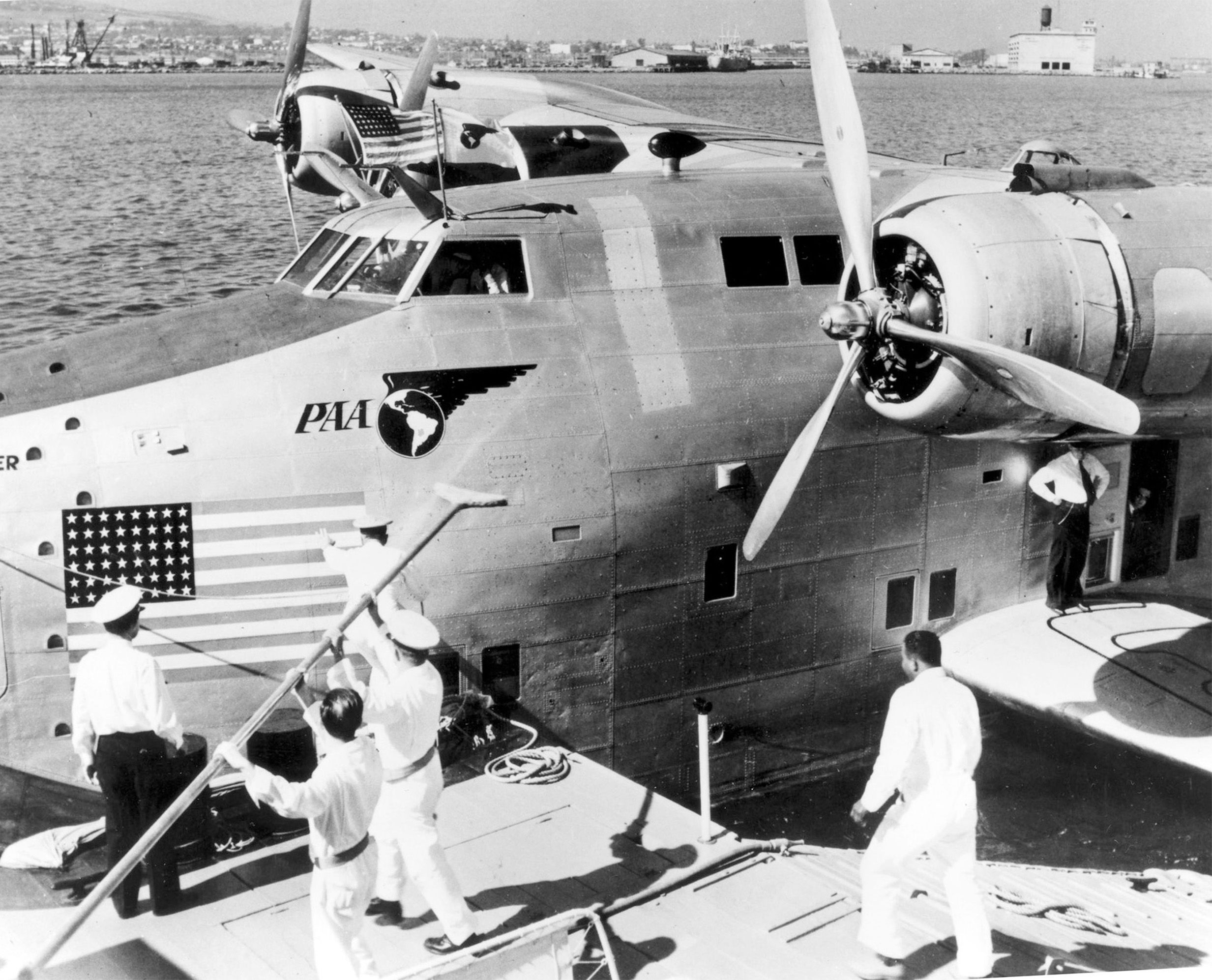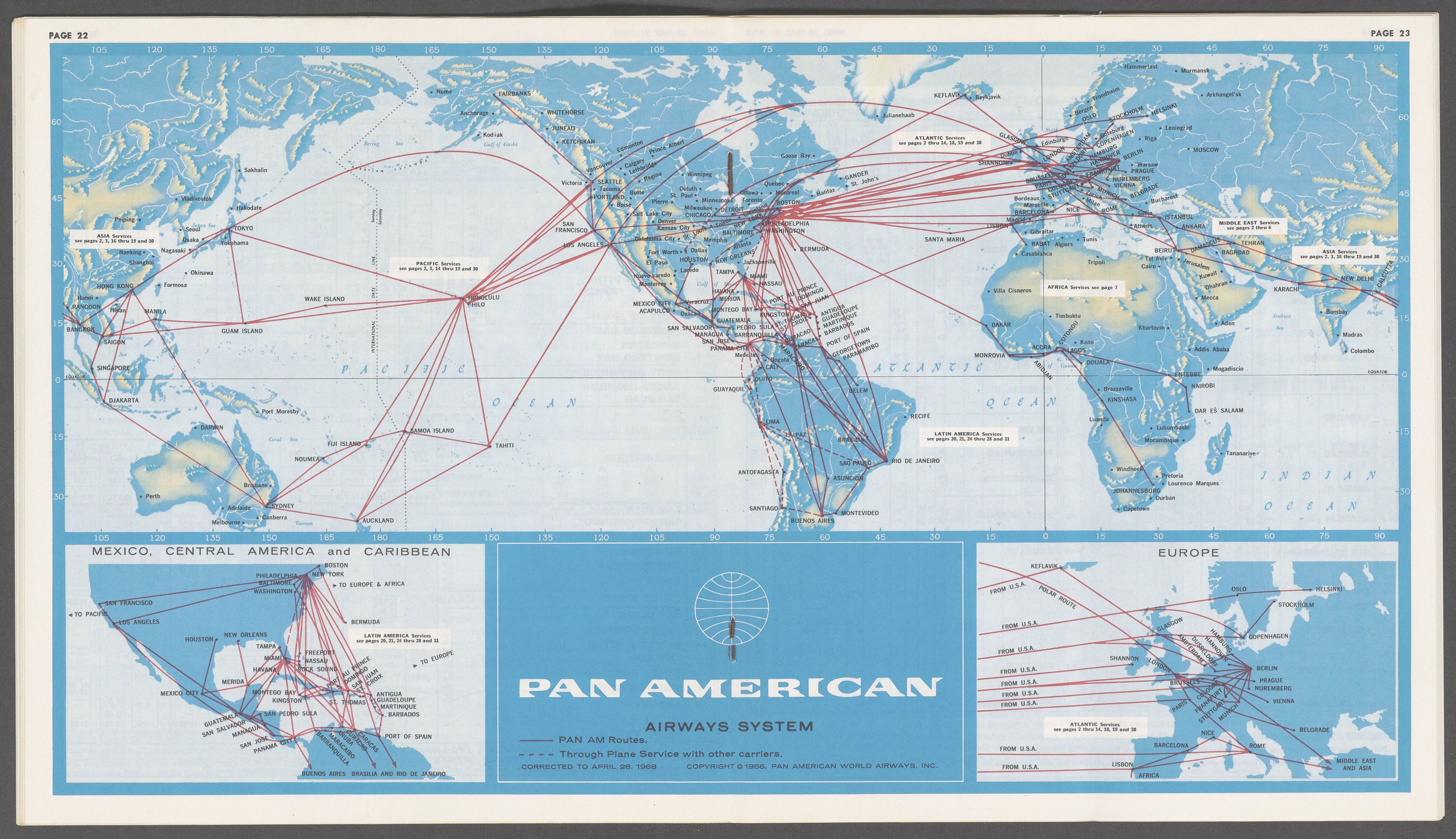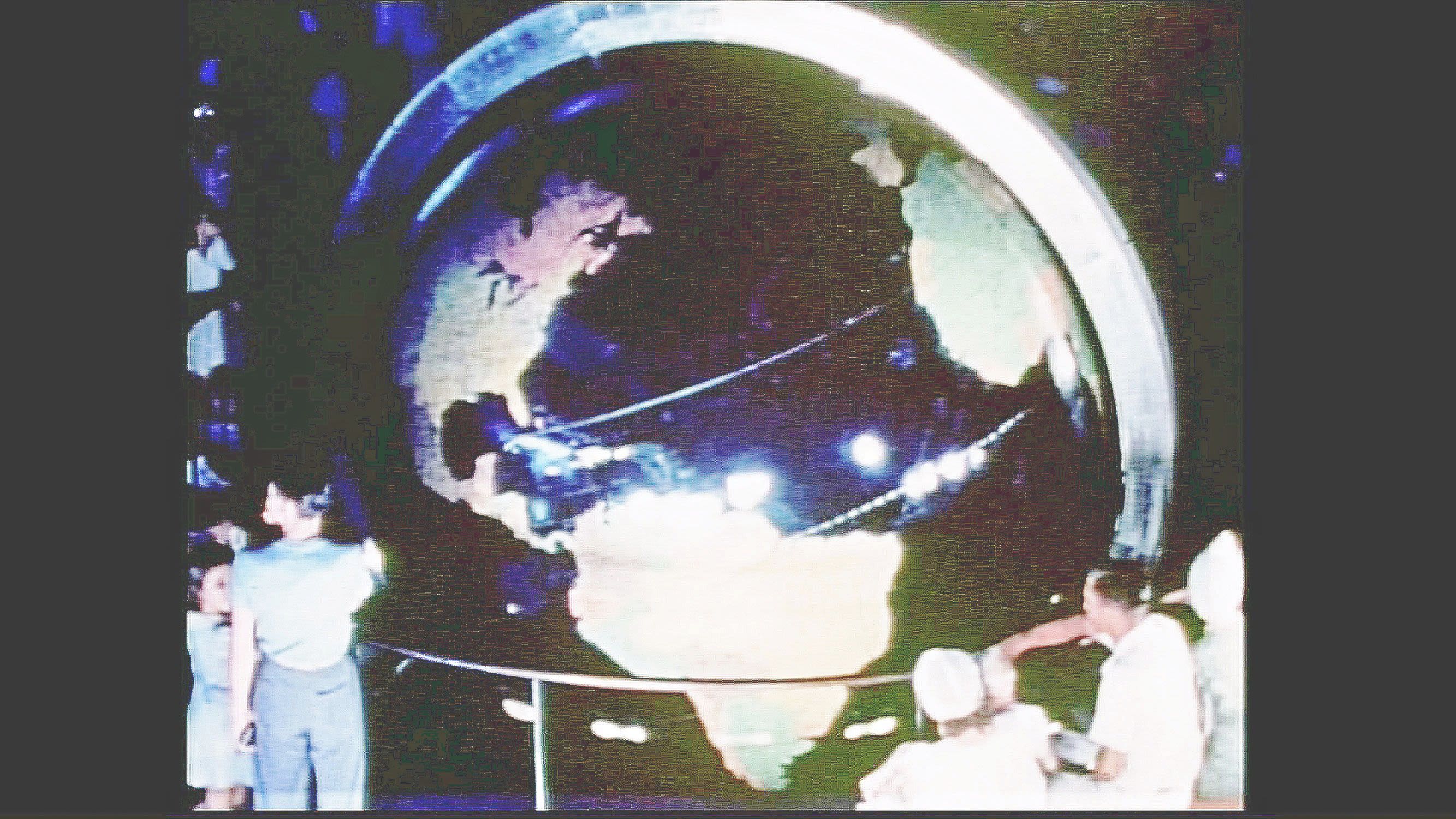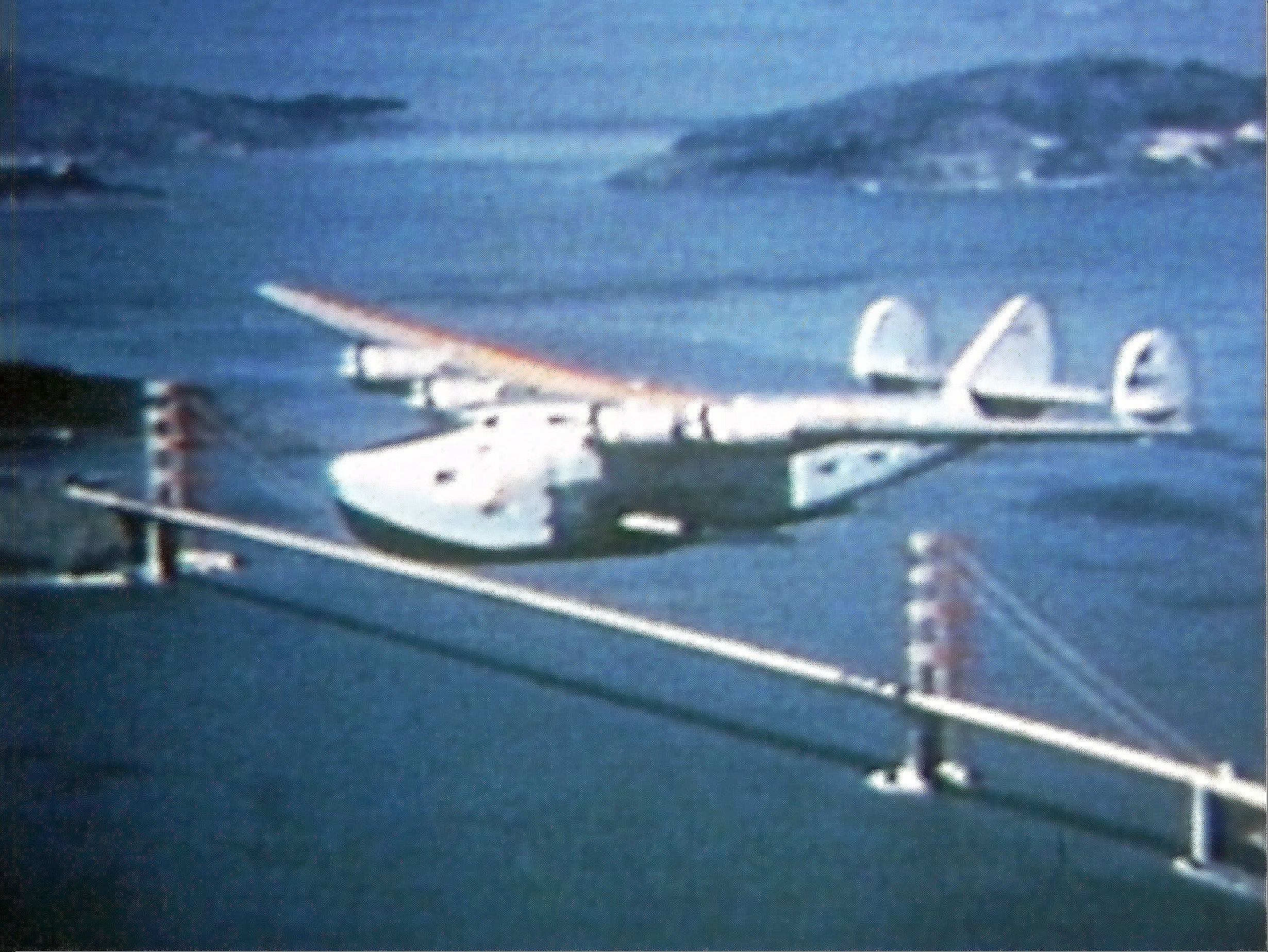PAN AM ON THE MOVE
"FLYING THE OCEANS"

PAN AM ON THE MOVE
brought to you online by the Pan Am Historical Foundation
"FLYING THE OCEANS"
Years before the actual incarnation of Pan American Airways, Juan Trippe was thinking about air travel.
As a young college student in 1919, he wrote a piece published in the Yale Graphic Magazine (of which he was the managing editor) lauding the achievement of the US Navy’s Atlantic-crossing NC-4 flying boat.
JTT (as he was often referred to) saw a future for aviation, not just in getting people off the ground, but in conquering the oceans.
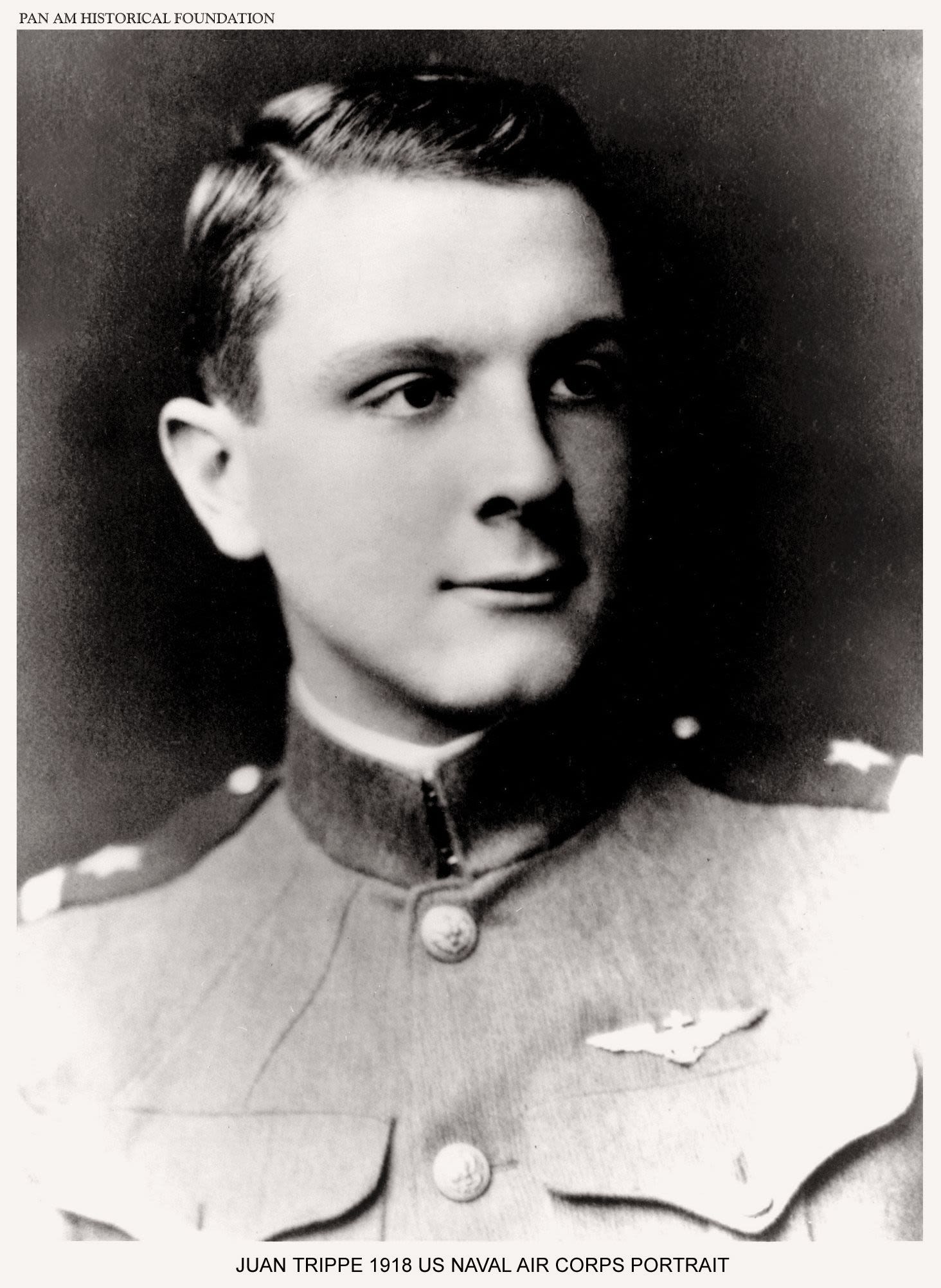
JUAN TRIPPE
Trippe's vision was still a long way from fulfillment in 1919, but you can pick up that thread and see how it was woven into his life’s work and manifested down through the years by Pan Am under his guidance.
With time and experience, JTT’s plan acquired new dimensions that helped push the technology as well as the economic and social dimensions of intercontinental air travel.
Like Gutenberg, who adapted prior technology and used the innovation of movable type to revolutionize the spread of the printed word, JTT brought together varied innovations, resources, and talents to achieve his dream of traveling by air on routes that circled the globe.
If you take the long view about the development of our modern global air transportation system, Juan Terry Trippe might justifiably be regarded as the single most important individual to whom credit should go.
AIRCRAFT & ROUTES
As a pilot himself, Trippe’s thoughts and aspirations never strayed far from airplanes and the distances they were designed to cover.
The four films we present here showcase essential dimensions of the game-changing vision of Juan Trippe: the aircraft of Pan American and the routes they flew.
The films center on the steps that Juan Trippe took toward increasing the capabilities of Pan Am’s planes and flying them to ever-expanding horizons around the world.
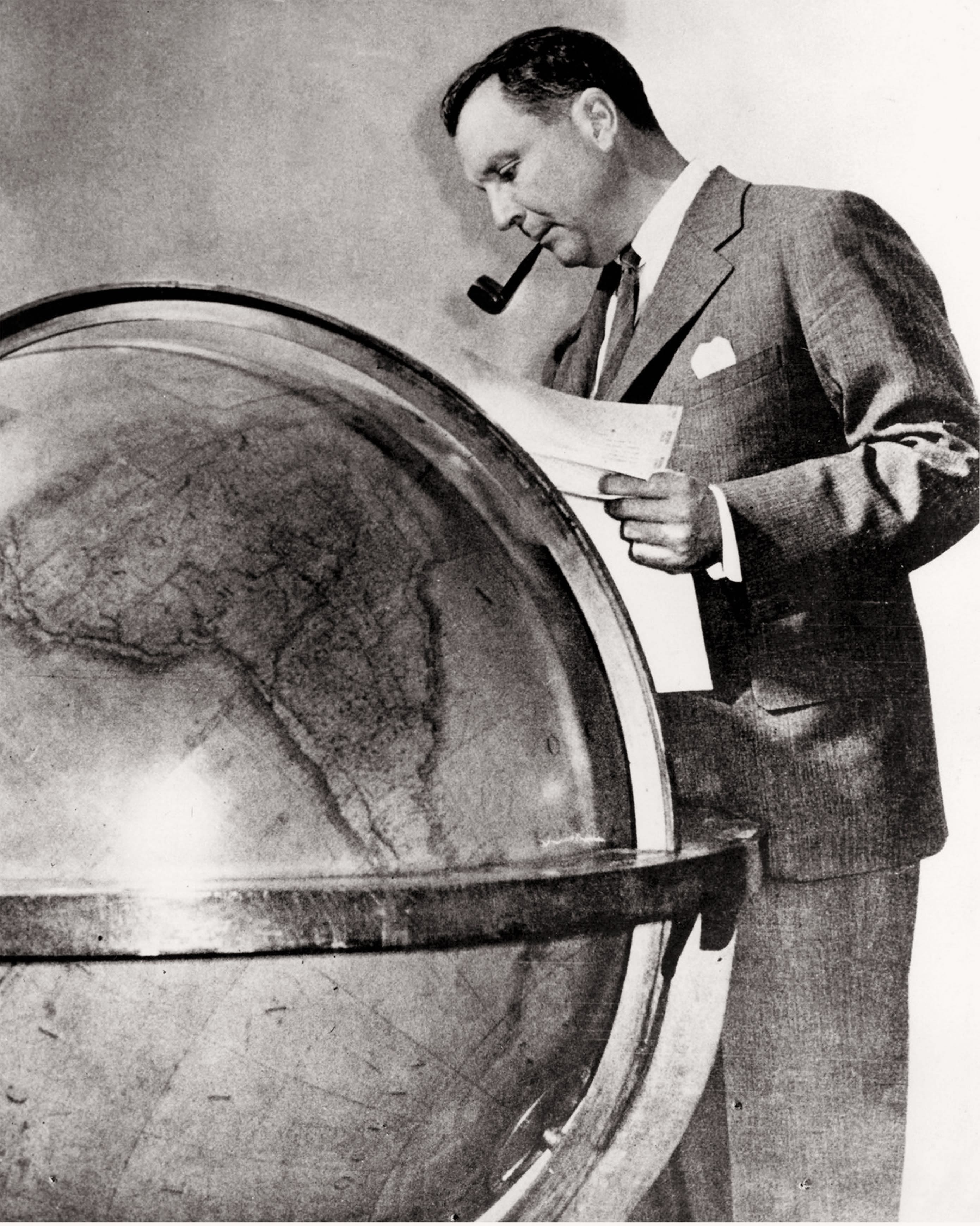
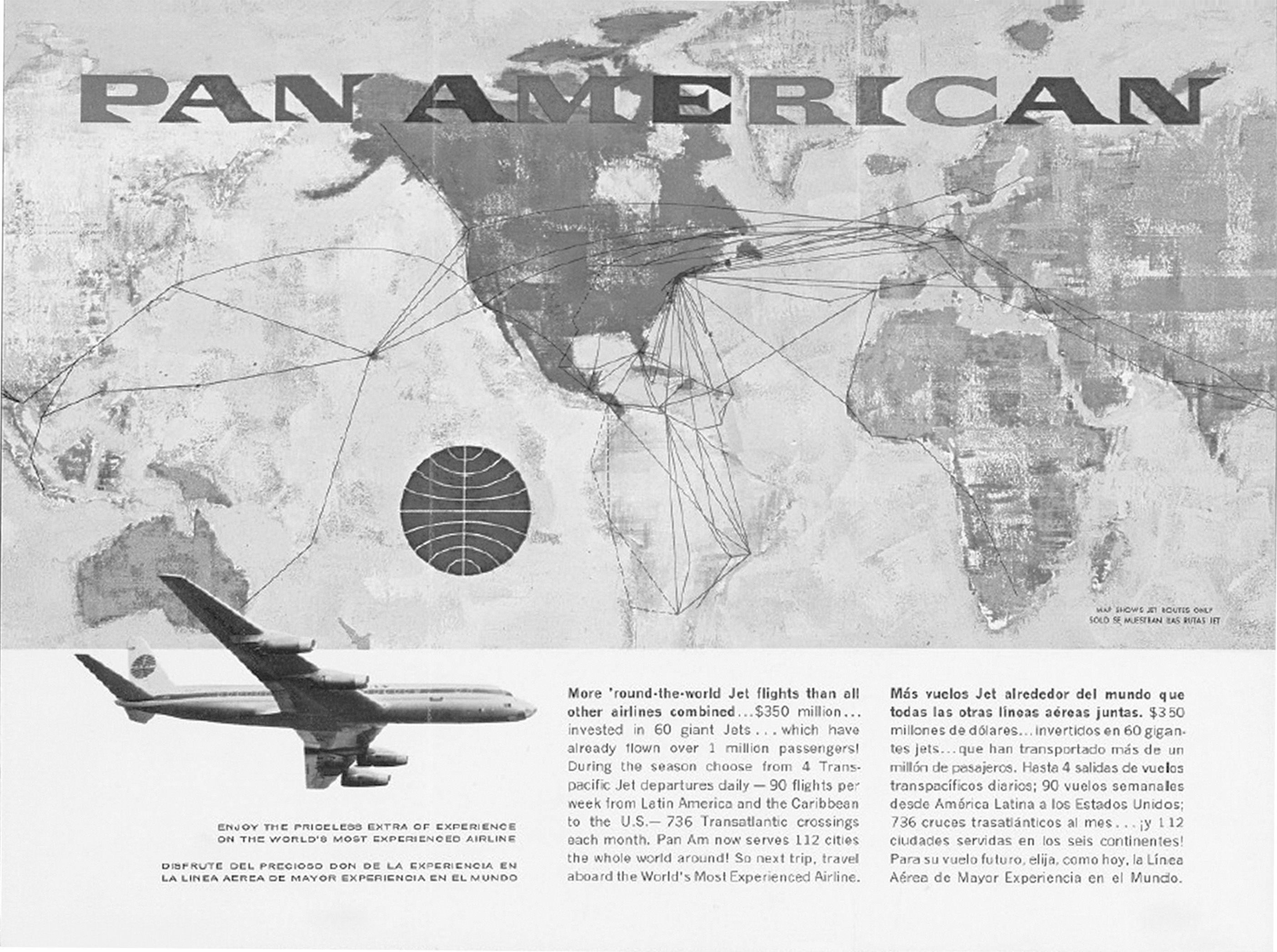
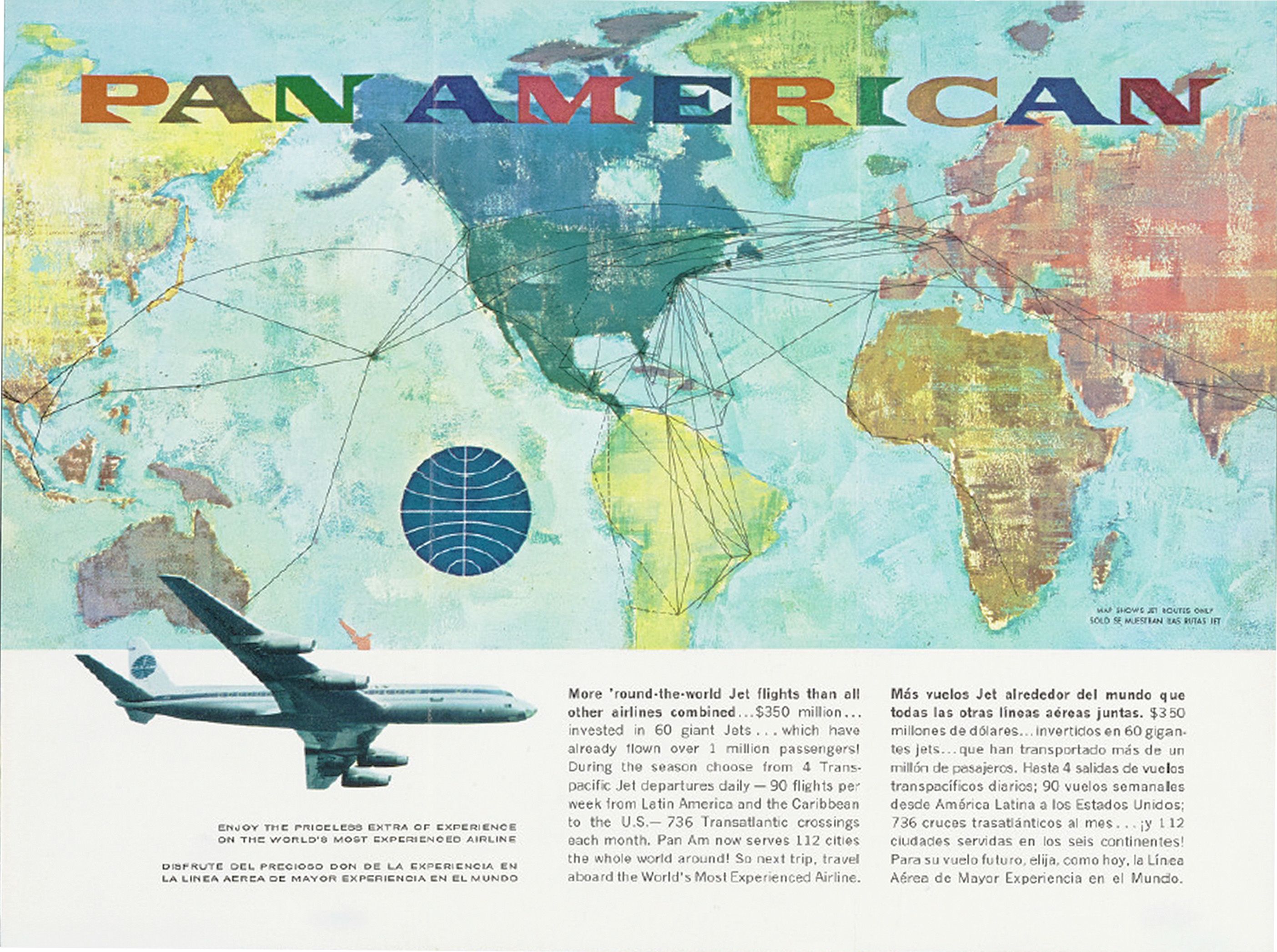
Sikorsky S-42: "Pan American Clipper" in Hawaii, April 1935.
Sikorsky S-42: "Pan American Clipper" in Hawaii, April 1935.
FLYING BOATS
PUSHING THE ENVELOPE OF TRANSOCEANIC TRANSPORT
Pan Am Sikorsky S-42 "Brazilian Clipper."
Pan Am Sikorsky S-42 "Brazilian Clipper."
THE SIKORSKY S-42 SURVEYS
For the Winter 2024 "FilmFest," three movies focus on the Pan Am flying boats that first crossed the vast expanses of the Pacific and Atlantic Oceans.
Pan Am's Sikorsky S-42 is highlighted in “Gateway to the Southern Americas.” This flying boat was far more advanced than any plane that Pan Am had put into service up to that time, and it successfully flew surveys to the South Pacific and across the Atlantic to chart routes for the future.
Had the geopolitical setting been right for Pan Am to begin transatlantic air service at an earlier moment in aviation history, then the Sikorsky S-42 might have been just the right plane for the job.
Pan Am flying boats ready for maintenance, a Sikorsky S-42 and two Martin M-130s.
Pan Am flying boats ready for maintenance, a Sikorsky S-42 and two Martin M-130s.
THE MARTIN M-130
CROSSING THE PACIFIC
The transpacific route inaugural by the "China Clipper" is the subject of the film “Pacific Passage.” As historian Thor Johnson notes in the film, the Martin could do what no other aircraft could do in 1935.
As it happened, the Martin M-130 was available to open the alternative Pacific route that Pan Am had tackled, instead of the Atlantic. And as a result, when it flew the inaugural between North America and Asia in 1935, it became Pan Am’s first actual transoceanic transport!
Aerial view of Pan American Airways "China Clipper" - San Francisco piers and skyline in silhouette
Clyde H. Sunderland, commercial and aerial photographs, Oakland, California, c. 1936 July 22 (Library of Congress).
China Clipper, heavy with fuel on its inaugural flight across the Pacific, flies under San Francisco Bay Bridge, November 22, 1935, piloted by Pan Am Captain Edwin Musick.
Photo: Clyde H. Sunderland, photographer, 1935 November 22.
China Clipper in War Paint
Pan Am's M-130 China Clipper camouflaged for flights during World War Two.
China Clipper in Florida
Crowds watch the M-130 at Miami's Dinner Key Seaplane Base.
Pan Am Boeing 314 "American Clipper" on the inaugural to Auckland, New Zealand from San Francisco, September 11, 1940.
Pan Am Boeing 314 "American Clipper" on the inaugural to Auckland, New Zealand from San Francisco, September 11, 1940.
THE BOEING B-314
But the Martin was not the final step in the evolutionary chain for Pan Am’s initial generation of intercontinental aircraft. That honor was claimed by the Boeing B-314, essentially the subject of of “Transpacific,” which was produced in 1939, the year of the airplane’s introduction.
By this time, the way was finally cleared for Pan Am to fly to Europe as well as Asia. The Boeing B-314 was bigger and more capable than the M-130 and it marked the pinnacle of flying boat technology.
Pan Am B-314 in winter at the Marine Air Terminal, La Guardia, NYC.
Pan Am B-314 in winter at the Marine Air Terminal, La Guardia, NYC.
PAN AM'S GOLDEN AGE & BEYOND
Pan American would never have achieved JTT’s concept with flying boats alone.
The “boats” became outmoded with technological advances in World War Two, and in short order the state-of-the-art went from piston-powered land planes — like the Douglas DC-4, Lockheed Constellation, and Boeing Stratocruiser — to Pan Am's famous Jets.
Aviation technology had moved on, and so did Trippe's prescient grasp of possibilities for the future of Pan Am.
"Stairway to Anywhere"
"It's only a short few steps to Hawaii, or Europe or Africa, Rio, Australia, or Siam. When you walk the boarding stairway of a Pan American Clipper your travel wish can be the full width of the compass, and as wide as the world...
In truth, Pan American has changed the dimensions of the traveler's world. Time, space and fares are so reduced that travel to far places, once an experience for only a privileged few, is now for everyone.

TECHNOLOGY ADVANCES
It was at Pan Am’s half-century mark in 1977 that “The Pan Am Story” was produced. In the course of a few minutes, the film takes viewers from the very first days of Pan Am to what was the apex of commercial air transport technology with the advent of the Boeing 747 and 747SP. Although the film never mentions Juan Trippe by name, his never-failing objective is implicit in every step documented in the film.
Aerial view of N88861 "Winged Arrow" (1946-1955), Pan American Airways Lockheed L-049 Constellation. The "Connies" were the first widely adopted pressurized airliners.
Flying over Windsor Castle: Pan American World Airways Boeing 377 "Clipper Flying Eagle" N1035V (1949-1960). Stratocruisers were a favorite of Pan Am's passengers.
Pan American World Airways Douglas DC-7C, "Clipper Bald Eagle" N731PA (1956 -1965). The DC-7s represented the epitome of piston-powered commercial air transport.
Pan American enters the Jet Age: Aerial view of Boeing 707-121 "Clipper Maria" N707PA (1958-1974). The 707s cut flying times almost in half while Pan Am slashed passenger fares.
Boeing 747: Pan Am N747PA "Clipper America," ( 1970-1991) was renamed "Clipper Juan T. Trippe" in honor of the president and founder of Pan Am. The B-747 wide-body jets could carry 2-1/2 times the passengers of a B-707.
Pan Am Route Map, April-May 1968, from "Pan Am system time table," p. 23 (University of Miami Special Collections) . https://digitalcollections.library.miami.edu/digital/collection/asm0341/id/35216/
Pan Am Route Map, April-May 1968, from "Pan Am system time table," p. 23 (University of Miami Special Collections) . https://digitalcollections.library.miami.edu/digital/collection/asm0341/id/35216/
WATCH THE FILMS
Three original films in the FilmFest were produced by Pan American World Airways, shown recently at San Francisco Aeronautical Society's Gala. The fourth film is a fond tribute to the trailblazing transpacific M-130 "China Clipper," to celebrate the 75th anniversary of its inaugural flight to Asia from San Francisco in November 1935.
- Gateway to the Southern Americas (circa 1938)
- Pacific Passage (2010)
- Transpacific (1939)
- The Pan Am Story (1977)

